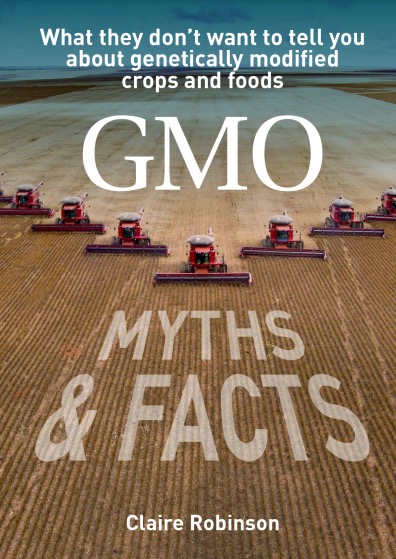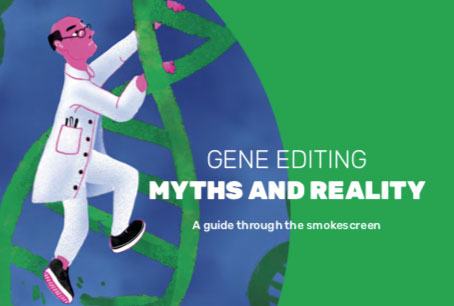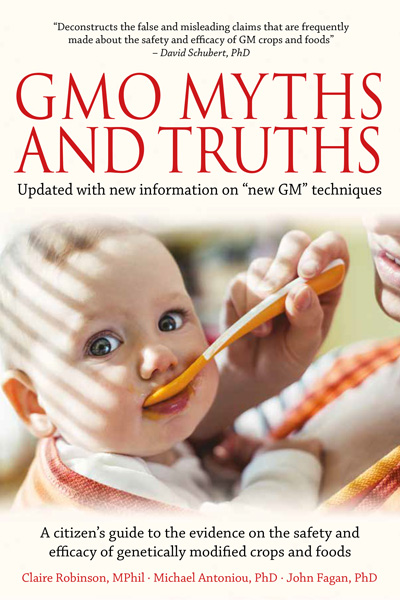
Researchers are recruiting vitamin D-deficient subjects to trial the GM tomato. Report: Claire Robinson
According to an article on BBC News, the Quadram Institute in Norwich is recruiting 76 people with low vitamin D to take part in the ViTaL-D Study, where some participants will eat soup containing tomatoes that have been genetically engineered via gene editing to contain a vitamin D precursor. When the fruit is placed under ultraviolet light, vitamin D forms.
Pat Thomas from Beyond GM was quoted by BBC News as saying there should be "an abundance of precaution" when it comes to GM foods that people have not eaten before.
While the BBC headlines its article on the GM vitamin D tomato study "Trial uses tomatoes to test impact of gene-edited food on humans" and touts it as probably "the first human trial in the UK", we should be under no illusions. This 21-day study is not a food safety study and it won't "test the impact of a gene-edited food on humans", in the sense of monitoring the health of GM tomato-consuming people over the medium or longer term.
Instead, it will be an efficacy study, where the scientists will measure the levels of vitamin D in the blood after consuming meals containing the GM tomatoes. If levels rise above those in the controls fed non-GM tomatoes (supplemented in one group with a vitamin D supplement), this GM product will be declared a success, regardless of any other effects it might have on health over time. They will remain undiscovered by this study.
In other words, it's a study designed with marketing in mind, not precaution about human health.
Vitamin D precursor
The GM tomato does not contain the desirable "sunshine vitamin" D3. Instead, it contains a precursor, which researchers on the GM tomatoes converted to D3 by exposing them to ultraviolet B (UVB) light.
One problem with this system is that if whole tomatoes were subjected to this treatment, vitamin D3 would only form on the surfaces directly exposed to the UVB light. With this limitation in mind, the researchers who authored the key study that concluded "Biofortified tomatoes provide a new route to vitamin D sufficiency" had to thinly (1mm) slice the tomatoes first!
The need to slice and expose the tomatoes to UVB light to make them produce the desired vitamin D3 means that they would have to be marketed in processed form, as juice or soup (as in the planned study) and not as whole fruits. This fact, along with whatever "reason-to-buy" label the marketing people come up with, may have the unintended side-benefit of enabling those who don't want to consume experimental GM foods to avoid buying them. That's the case even if, as the BBC has been led to believe, they qualify as a "precision bred" gene-edited food, which the UK government is determined to exclude from GMO labelling.
Ultra-processed
The soup that will be fed to the study participants likely qualifies as an ultra-processed food. Its ingredients include glucose syrup and "flavour enhancers", including monosodium glutamate. Not exactly a boost to health!
Is there any concern with the UV treatment? Potentially. A study found that "Incorrectly applied UV treatment may change the composition of foods. Free-radical as well as photochemical reactions can digest the proteins, damage the antioxidants, oxidise the lipids, make changes to the colour and substance, and produce undesirable flavourings and odorous substances. Some vitamins are particularly sensitive to UV irradiation in the course of which losses could reach even 50%. Photosensitive water-soluble vitamins are vitamin C, B12, B6, B2 and folic acid, while vitamins A, K and E are the fat soluble [vitamins that are] sensitive to light, carotene being the only provitamin with such properties."
Non-GM sources of D3
Most vitamin D3 supplements are made from lanolin extracted from sheep’s wool. The developers of the GM vitamin D3 precursor tomato seize upon this link with the livestock industry to tout their product as suitable for vegans. But not only are vegans estimated to make up only 4% of the US population, there are already non-GM vegan sources of vitamin D3 – made from algae, lichen, or pine trees.
Given the above, Norfolk Healthy Produce faces major challenges in marketing its GM tomato. It will have to target a demographic that is health conscious enough to want extra D3 – but not so health conscious that they'll object to eating a GMO or a processed food, such as packaged GM tomato juice or soup. Nor can the company market the GM vitamin D3 precursor tomato to the same home gardeners as its GM Purple Tomato because they are unlikely to have UVB light generators or, for that matter, a knife that can cut tomatoes 1mm thin.
And given the ready availability and relatively inexpensive cost of non-GMO D3 supplements, including vegan ones, there seems to be no obvious reason to buy this GM tomato.










